Turmeric, the saffron-coloured spice, transports you to the Indian subcontinent for the duration of a meal. The plant from which this root is derived is Curcuma longa, a stunning perennial that can be grown indoors, in pots on the terrace, or directly in the ground for the lucky few living in the Mediterranean region. Discover how to harvest and use the tuber of this plant for culinary purposes, taking you on a journey to the other side of the world!
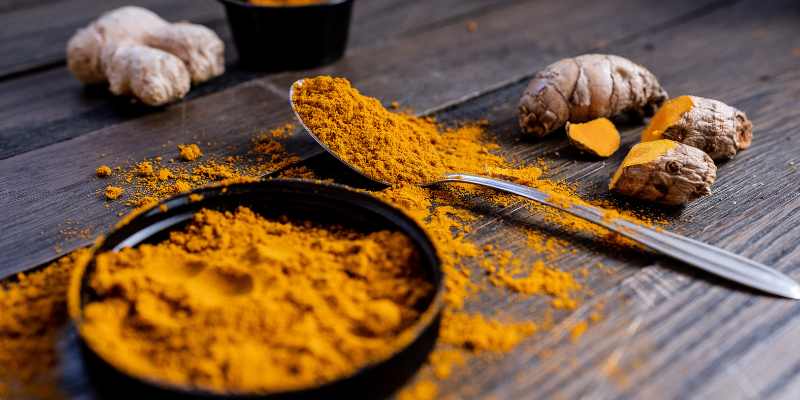
Turmeric in a nutshell
Known as Indian saffron, turmeric is commonly associated with the little spice jar on the kitchen shelf and its beautiful orange hue. This plant, whose tuber is indeed used to extract its deliciously fragrant powder, belongs to the Zingiberaceae family, which includes ginger and cardamom. There are about a hundred species of turmeric, including the Curcuma longa we focus on here.
Native to India, Curcuma longa can reach up to 1 metre in height in its natural habitat, where it thrives in partial shade. A superb ornamental plant for the exotic originality of its large pink or white bract flowers, it hides several surprises: the entire plant is edible, from its fleshy rhizome root to its flowers, hidden within the thick bracts, and even its foliage.
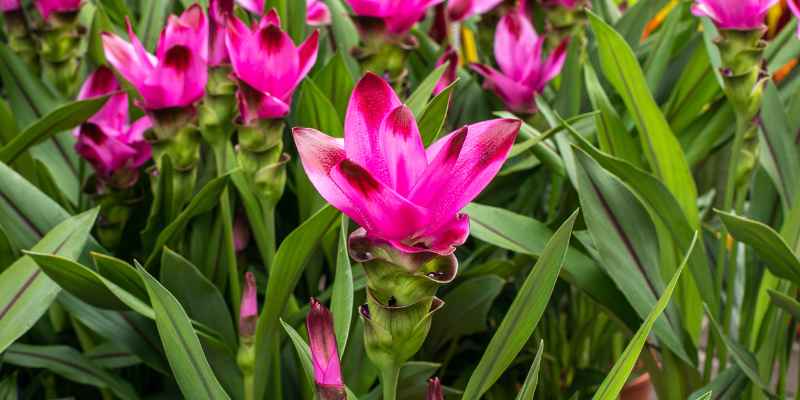
While turmeric is a key ingredient in all Indian curries, it is much more than just a spice in this country. It is used in Ayurvedic medicine, particularly as an anti-inflammatory and antioxidant, and its yellow colour grants it a sacred status in wedding ceremonies and certain religious rituals. Turmeric is also known as a dye plant: like saffron or St. John's wort, it yields a beautiful, almost indelible orange-yellow hue. For this reason, its rhizome is also widely used as a colouring agent in the food industry (identified as E100).
Growing turmeric for its health benefitsMost of us can only grow it in pots due to its sensitivity to cold. It’s a true tropical plant! Learn everything you need to know about growing turmeric in our comprehensive guide: Turmeric: planting, harvesting, and benefits. and in our article Growing turmeric for its health benefits.
When and how to harvest turmeric?
Curcuma longa produces a yellowish rhizome with a very aromatic scent. It is ready for harvest once the foliage begins to wilt, turn yellow, and dry out, between October and December depending on the region in our country, roughly 7 to 8 months after planting.
Use a fork or spade to dig up the rhizomes without damaging them. Gently dig around the plant and lift the rhizomes.
My tip: save a few rhizomes and overwinter them like dahlia tubers, so you can replant them in spring, and only use the rhizomes you need to produce the powder (to get 30 grams of powder, you’ll need about 100 to 150 grams of fresh rhizomes).
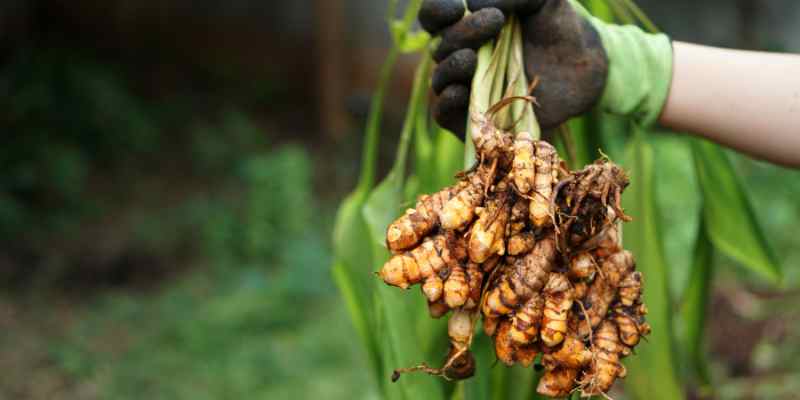
How to make turmeric powder?
The harvested rhizome is fresh and needs to be dried to obtain the precious powder. You can also slice it finely and use it as is to flavour dishes, much like ginger or galangal.
Start by cutting off the stems and leaves, and wash the rhizomes to remove any soil. Then, to turn the rhizomes into powder and make your own homemade turmeric, it’s quite simple:
- Boil the rhizomes in water for 45 minutes to 1 hour to soften them.
- Once cooled, peel the rhizomes carefully. You can use a knife or spoon to remove the skin.
- Slice the peeled rhizomes to speed up the drying process.
- Spread the turmeric pieces on a baking tray lined with parchment paper. Dry them in the oven at a low temperature (50°C) for several hours, until they are completely dehydrated and brittle. You can also use a dehydrator if you have one.
- Grind the dried rhizomes into a fine powder using a spice grinder, blender, or mortar and pestle.
Store your homemade turmeric powder in an airtight container, away from light and moisture, to preserve its freshness and aroma.

Turmeric in the kitchen: curry... and beyond!
The mild flavour and slightly bitter taste of turmeric make it perfect for many Indian dishes, but it is also widely used across South-West Asia, where its leaves are used to wrap food, all the way to Iran for savoury dishes. Turmeric is much less pungent than most spices, allowing it to be used in a variety of dishes, even desserts. Here are some ideas for using turmeric, from the classic to the more original!
Note: Curcumin, the pigment that gives turmeric its orange colour and is beneficial for our health, is more easily absorbed by the body when combined with black pepper or a fat.
Indian cuisine
Turmeric is a staple in many Indian curries and vegetable dishes. It adds a beautiful golden colour and a subtle flavour that you might soon find indispensable (as I have!).
- Coconut milk and turmeric chicken is very easy to make at home for a quick, colourful, and flavourful meal.

- Golden milk (or turmeric milk) is traditionally prepared in the evening by heating coconut milk (or any plant-based or cow’s milk) with a sparing amount of turmeric, black pepper, ginger, cinnamon, a little honey or molasses to sweeten, and ghee (clarified butter). A drink to discover here, both comforting and good for your health (great for colds as a replacement for our grog!). For an even more indulgent winter snack, add some crushed cashews or almonds. You can also add cardamom, vanilla, or star anise, depending on your taste. Anne Lataillade shares her recipe on her blog.
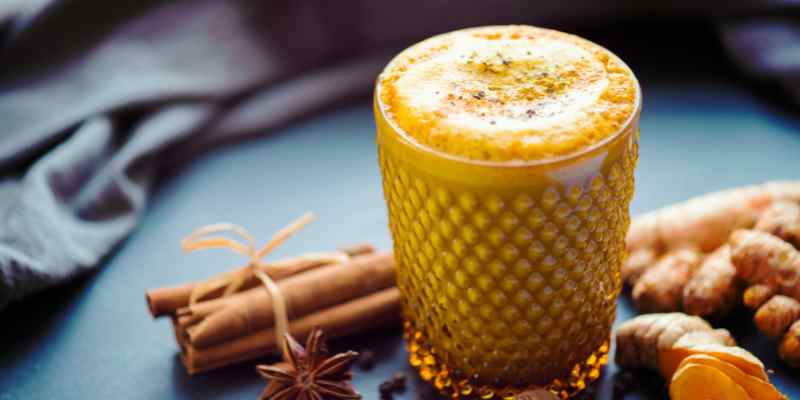
- Rice and soups: turmeric powder colours them divinely. Carrot soups are particularly delicious when enhanced with turmeric. Also great to add to dals made with red lentils or chickpeas.
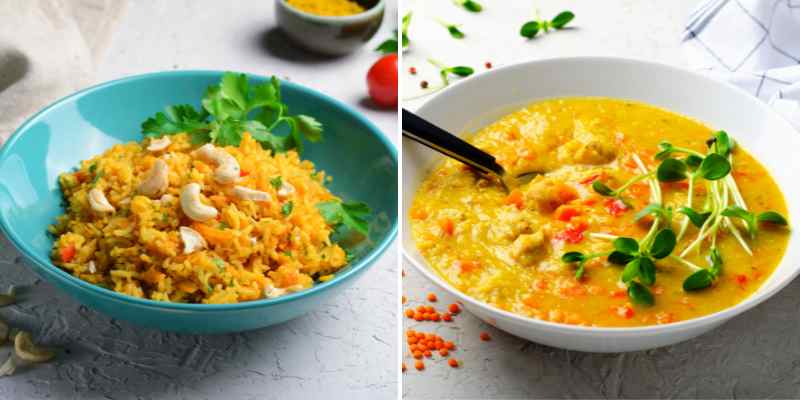
- Infusion of turmeric leaves or crushed rhizome: another drink from traditional Ayurvedic medicine, turmeric is beneficial for digestive issues, cholesterol, and liver problems (always consult a specialised therapist).
Thai cuisine
In Thailand, where galangal, another root from the same botanical family, is more commonly used, boiled leaves are sometimes incorporated into omelettes or stir-fried vegetables. But the primary use is fresh turmeric rhizomes, for example in coconut milk soups.
The large turmeric leaves are also used to wrap food, such as fish or rice, before cooking. This adds a subtle, fragrant flavour to the dishes. This principle is found in many countries.
Malaysian cuisine
In Malaysia, it’s the fresh leaves that are used as a spice, ground into a paste. This country also incorporates them into curry pastes, as in India. Turmeric leaves and rhizome pair well with lemongrass, as in satay sauces, but also with tamarind, kaffir lime leaves, garlic, onion, ginger, and coconut milk, which are staples in these Asian cuisines.
Vietnamese and Cambodian cuisine
Turmeric leaves are sometimes used to wrap food in certain recipes for steaming, replacing banana leaves. In Cambodia, the leaves are used in dishes like amok, a fish curry steamed in turmeric leaves.
In Hanoi, Vietnam, a dish called Chà Cá, made with grilled fish, is a city’s emblematic delight. Discover its recipe and history in this article: Hanoi-style fish with turmeric and dill.































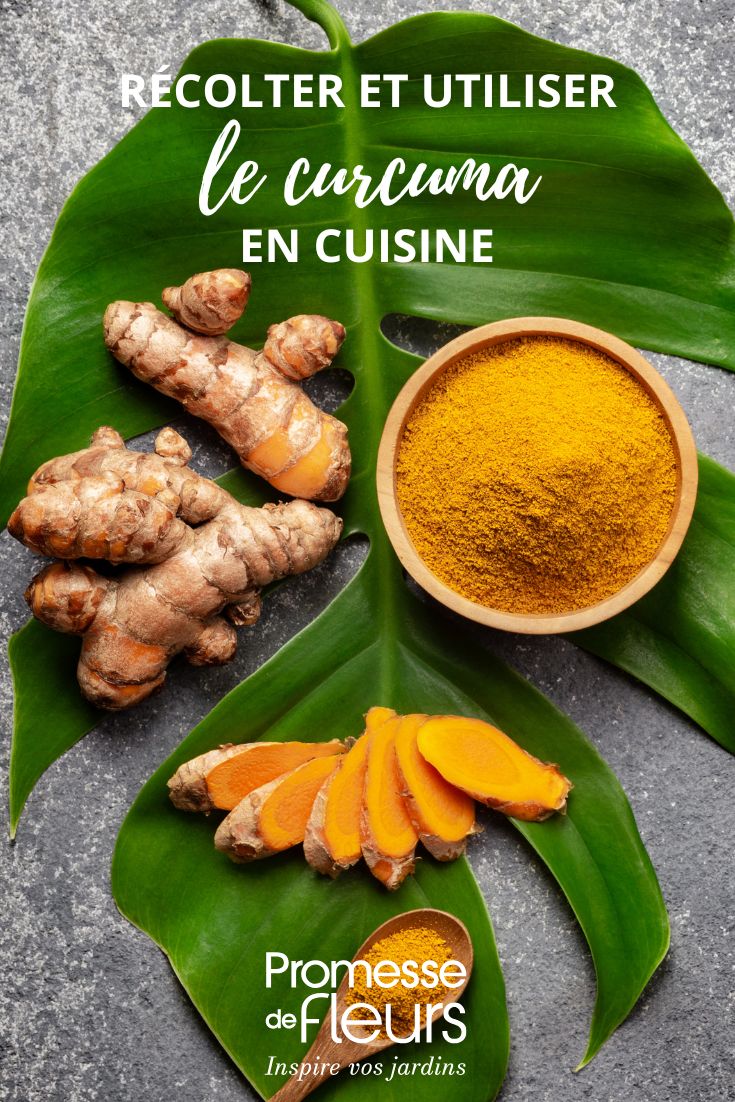
Comments